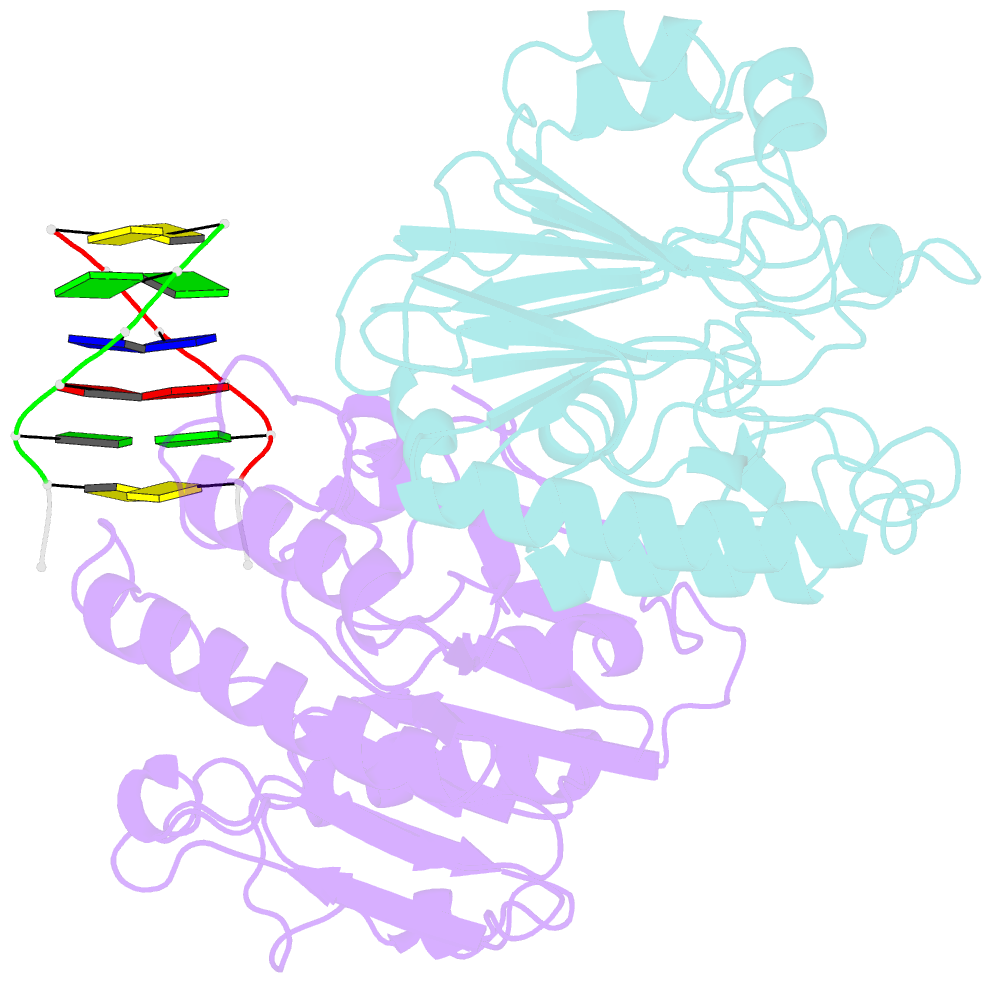Summary information and primary citation
- PDB-id
- 7tr7; SNAP-derived features in text and JSON formats;
DNAproDB
- Class
- lyase-DNA
- Method
- X-ray (2.0 Å)
- Summary
- Ape1 product complex with abasic ssDNA
- Reference
- Hoitsma NM, Norris J, Khoang TH, Kaushik V, Chadda R, Antony E, Hedglin M, Freudenthal BD (2023): "Mechanistic insight into AP-endonuclease 1 cleavage of abasic sites at stalled replication fork mimics." Nucleic Acids Res., 51, 6738-6753. doi: 10.1093/nar/gkad481.
- Abstract
- Many types of damage, including abasic sites, block replicative DNA polymerases causing replication fork uncoupling and generating ssDNA. AP-Endonuclease 1 (APE1) has been shown to cleave abasic sites in ssDNA. Importantly, APE1 cleavage of ssDNA at a replication fork has significant biological implications by generating double strand breaks that could collapse the replication fork. Despite this, the molecular basis and efficiency of APE1 processing abasic sites at replication forks remain elusive. Here, we investigate APE1 cleavage of abasic substrates that mimic APE1 interactions at stalled replication forks or gaps. We determine that APE1 has robust activity on these substrates, like dsDNA, and report rates for cleavage and product release. X-ray structures visualize the APE1 active site, highlighting an analogous mechanism is used to process ssDNA substrates as canonical APE1 activity on dsDNA. However, mutational analysis reveals R177 to be uniquely critical for the APE1 ssDNA cleavage mechanism. Additionally, we investigate the interplay between APE1 and Replication Protein A (RPA), the major ssDNA-binding protein at replication forks, revealing that APE1 can cleave an abasic site while RPA is still bound to the DNA. Together, this work provides molecular level insights into abasic ssDNA processing by APE1, including the presence of RPA.





